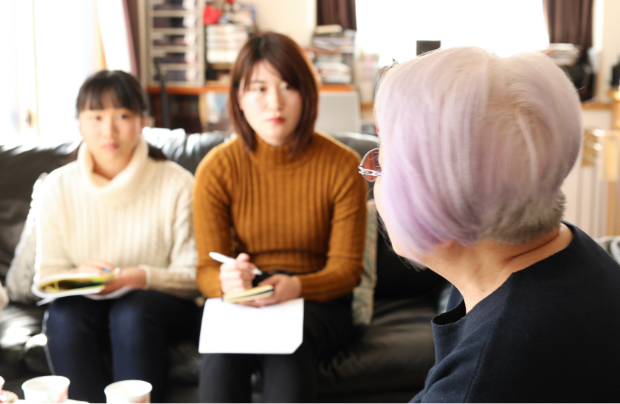HIROSHIMA memory keepers Pass down a story
Vol. 17 2021.4.30 up
Now, many people are giving their A-bomb testimonies. I think that we, who were third-graders at the time of the A-bombing, might be the last generation who can talk about what we witnessed.
Yoko Wada
A-bomb survivor

What do people handing down the experience of the A-bombing think and try to convey?
Ms. Yoko Wada, 84, had been evacuated out of the city at the time of A-bombing. She told us what she had seen on August 6th at the age of eight, and what Hiroshima had been like before and after the A-bombing.
Section
Life before the A-bombing
Tell us about your life before the A-bomb was dropped.
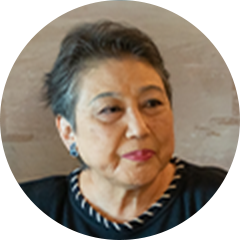
I was born and raised in Koi, located on the west side of Hiroshima City.
I lived with my parents, grandmother, older brother, younger brother, younger sister and two cousins. Totally nine of us lived together.
My father was an office worker, and we were an ordinary family, not especially poor or rich.
My brother is seven years older than I. Three boys were born between my older brother and me, but they all died before I was born.
What did you like to do when you were a child?

I loved singing and dancing.
I knew almost all of the popular songs of those days.
We sang a jump rope rhyming patriotic march, “Miyo, tokai no sora akete, kyokujitsu takaku kagayakeba,” and “Kinshi kagayaku nihon no haearu hikari mi ni ukete,” celebrating our ancient Emperor Jinmu. And we sang a bouncing ball rhyme song, “Ruzuberuto to Chachiru ga, hayashi no naka de naiteita. Sore wo miteita watashitachi onaka wo kakaete wa ha ha.”
When I look at these songs closely now, they include many patriotic and satirical meanings, but in those days, I sang these songs without knowing the meanings.
We, elementary students, visited a shrine called Hachiman-sama, on the mountain behind us at the beginning of each month to pray for the war victory. We went to and from school in groups composed of students living in the same neighborhood. The oldest student in the group took the lead. There was a statue of Kinjiro Ninomiya at school, and whenever we passed in front of it, we bowed very low with respect.
I heard from other survivors about the song, “Kinshi kagayaku.”
This song was made to celebrate the 2600th anniversary of Emperor Jinmu’s coronation, wasn’t it?
I heard that we didn’t use the modern calendar in those days.

That’s right. We took the year of 1940 as the 2600th year after Emperor Jinmu’s coronation. On the day of this celebration, a flag procession was held. I remember that I was watching the procession, sitting on my tall uncle’s shoulders. This uncle later died in the Pacific War.
On August 6th
How old were you when the A-bomb was dropped?

I was eight years old, a third grader of Imuro National School in Asa-gun (present Imuro Elementary School). With my birthday coming in a month, I was about to be nine years old.
Before the A-bombing, B-29s came flying over the city from time to time, but Hiroshima hadn’t been air-raided so seriously compared to other areas. There was a relatively calm atmosphere. No one expected such a catastrophic incident to occur.
As the war worsened, we evacuated from Koi to Imuro, Asa-gun in April, 1945. I was in Imuro on August 6th. It was about 25km north of the hypocenter.
What was your life like where you were evacuated?

In Imuro, I lived with my grandmother, my younger brother, my aunt and her son. We rented a part of the second floor of Dr. Uemoto, a dentist, to live in.
Next to Imuro Village was Suzuhari Village. Dr. Uemoto was the only dentist in the two villages. The dental office was near Imuro Station, and it was a fine house with a beautiful pond and plants in the garden.
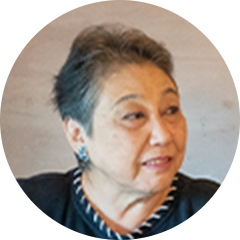
I went to school on foot every day, and it took about 50 minutes.
We had almost no classes at school. Instead, the whole class searched for edible wild plants.
The wild plants were used as ingredients for grass dumplings Hiroshima city dwellers ate.
My younger brother and I, who were brought up in a city, had a hard time in distinguishing edible wild plants.
Gradually, I came to dislike the school which offered no classes and stopped going to school.
In May, one month after moving to Imuro, my younger brother had a relapse of liver disease and went back to Hiroshima to get medical treatment.
Then, four of us—my grandmother, my aunt, her son and me—started our evacuation life.

Tell us what you were doing on August 6th at 8:15?
On the morning of August 6th, I was alone playing with beanbags on the veranda of the house where we had evacuated.
Suddenly, the sky flashed and an enormous boom sounded.
It was shocking as if my whole head had been shaken.
I think that nobody knew that it was a new-type bomb just after the A-bomb was dropped. What was the reaction of people in Imuro?

Some said, “A bomb hit the Mitsubishi Factory in Gion.” Others said, “A bomb was dropped in Kabe, near Imuro.” Various rumors were flying around, but we couldn’t get correct information.
A little before noon on August 6th, a shocking incident occurred.
While I was playing with neighborhood children near the waiting room of Imuro Station, a train from Hiroshima arrived at the station. As soon as it arrived, injured people got out of the train like a snow avalanche. They fell over one after another on the platform.
I wondered what had happened in the train.
They were all bloody and injured. Adults shouted, “Children, don’t get in the way! Go home!” I still remember that sight of turmoil.
The sight I saw in Hiroshima
When did you come back to Hiroshima City from Imuro?
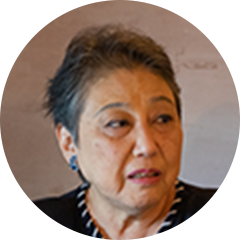
I came back on August 9th. We worried about my family and our house and left Imuro at dawn with my grandmother and my aunt and her son.
Toward Koi, we walked along a side road of the train track. When we arrived, it was already pitch dark.
The house didn’t have much damage and my mother, my brothers and sister were in the storehouse. When I saw them again, I was really happy.
My father, who had been out of town on business, returned safely on August 12th.
I don’t know where my mother’s brother was.
His wife got seriously injured but came back home in the evening on August 6th, but she died on August 19th, suffering in agony.
Do you remember anything special on your way home?

I was astonished when I saw the big auditorium, which had stood at Misasa National School, turned into just a skeleton of the building.
And I saw two cows’ dead bodies on the riverbed near the Yokogawa Railway Bridge. Their bellies were so swollen that I took them for the bodies of elephants.
Koi National School, where you went before you evacuated, was used as a makeshift crematorium when the A-bomb victims were cremated. Do you remember that?

Yes, I remember it vividly.
There were two playgrounds in Koi National School. On the larger grounds, many elongated grooves were dug and bodies carried from the city center were cremated there. The smell at that time was terrible.
After the A-bombing, the school started again, and teachers and students planted sweet potato seedlings on the playground which had been used as a makeshift crematorium.
Though the leaves and the stems grew vigorously, the sweet potatoes which we expected to harvest grew only as big as our fingers.
Disappointed, we took only the vines and stems home to cook.
Do you have any long lasting scenes you witnessed in Hiroshima after the war?

The most memorable was the demobilized soldiers I saw.
After Japan’s surrender, soldiers returned to Japan from the war front. Some of them had lost their limbs. I saw them playing the accordion, begging in front of a department store or wherever there were people.
Though I was just a child, when I saw them, I felt sorry for them, .
They had been fighting heroically on the front line. I thought it was unjust for them to have to live like that.

I also remember what the hypocenter looked like when I walked around with my mother after the war.
A few days after August 15th, the end of the war, my mother said to me, “Let’s go see the city.”
We had to cross several rivers from Koi to the hypocenter.
The railway bridge and other bridges had been all destroyed, so we walked across the rivers at low tide.
When we were approaching the present-day Hondori shopping street, my mother said pointing at some place, “This must be where Kimura-ya was!” Kimura-ya was my favorite shop where we could eat parfait and ice-cream.
I found a plate engraved with the Kimura-ya mark which formed into a lump sticking with a melted bottle and glass whose original shape was unknown.
My mother and I agreed, “This is a proof that something terrible happened. This should be kept for posterity,” and I carefully put it in my rucksack to take it home, though it was quite heavy.
What made you talk about your A-bomb experience, and what message would you like to convey to the younger generation?
Tell us what made you talk about your A-bomb experience.

I began to tell it seven or eight years ago when I received a request for my testimony from the principal of Koi Elementary School, through my childhood friend, the wife of a Buddhist priest.
I told my story to the fourth to sixth-grade students there.
As I was exposed to the A-bombing at the age of eight, I gave my testimony to students of the same age as I was at that time.
Do you have any impressive episode when talking to the elementary students?

Yes. During the question-and-answer session, one boy asked me, “I heard that they lacked daily necessities during the war. Why didn’t you go to a shop to buy things?” I was very surprised.
I answered, “Even though we went to a shop, they didn’t have goods to sell.” The student didn’t seem to understand what I meant.
When I first started telling my story, I didn’t realize that children now couldn’t imagine what life was like during the war. When we tell our stories, we should explain the historical background that people could not buy things they wanted.
Do you think it may be good to learn about life during the war by watching an animated film like, “In This Corner of the World”?
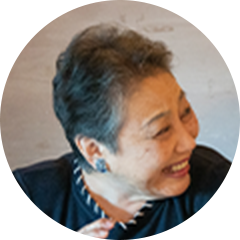
Yes. It depends on the children’s age, but I think that it would be easy for them to imagine how life in those days was if they watched an animated film before listening to us.
Finally, please tell us what message you would like to give to young people.
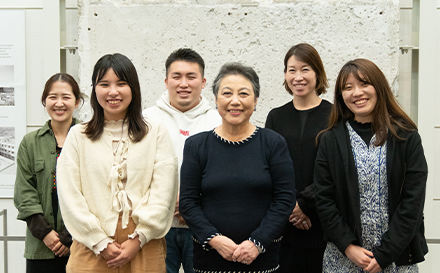
Now, many people are giving their A-bomb testimonies. I think that we, who were third- graders at the time of the A-bombing, might be the last generation who can talk about what we witnessed.
Even between my two-year younger brother and me, I think that there are some differences about how we remember the A-bombing and how we express it.
Even one fact can be perceived differently by each person.
I am trying not to say inaccurate things, and I want to pass down my A-bomb experiences to the next generation.
My message to the younger generation is this: There is no time to waste in life.
I think it is most important to live each moment to the fullest.
Let’s appreciate such precious moments in a world free of war.
Interviewed on October 2020.
About
"Interviews with HIROSHIMA memory keepers" is a part of project that Hiroshima「」– 3rd Generation Exhibition: Succeeding to History
We have recorded interviews with A-bomb survivors, A-bomb Legacy Successors, and peace volunteers since 2015.
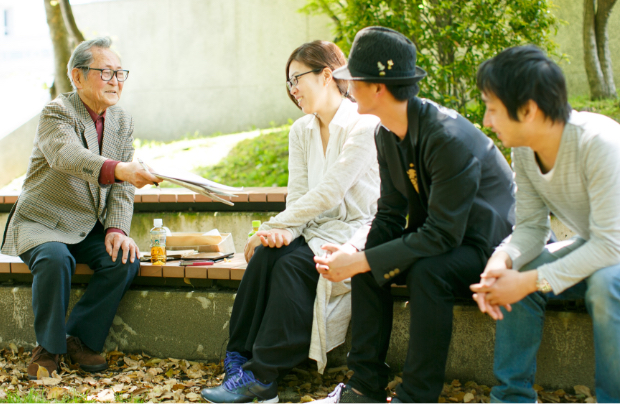
What are Hiroshima memory keepers feeling now, and what are they trying to pass on?
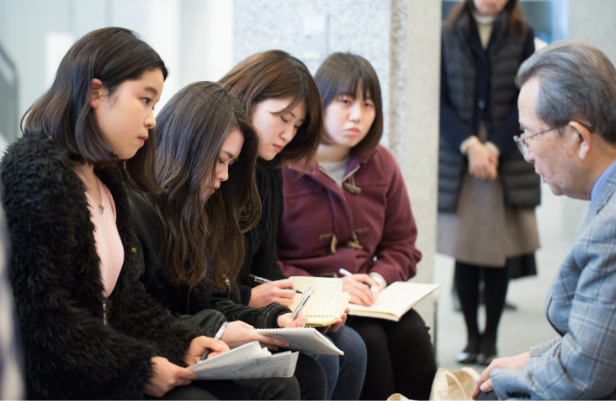
What can we learn from the bombing of Hiroshima? What messages can we convey to the next generation? Please share your ideas.
